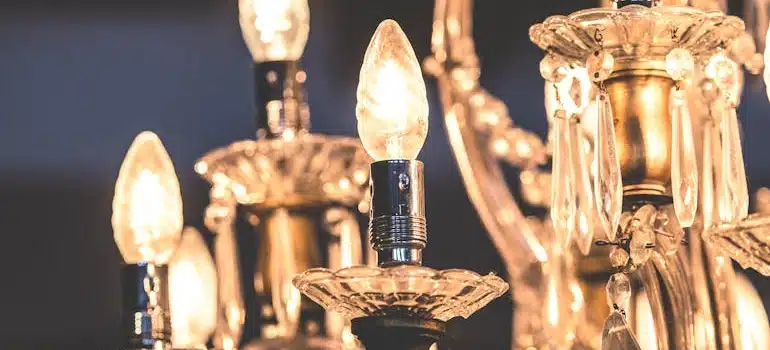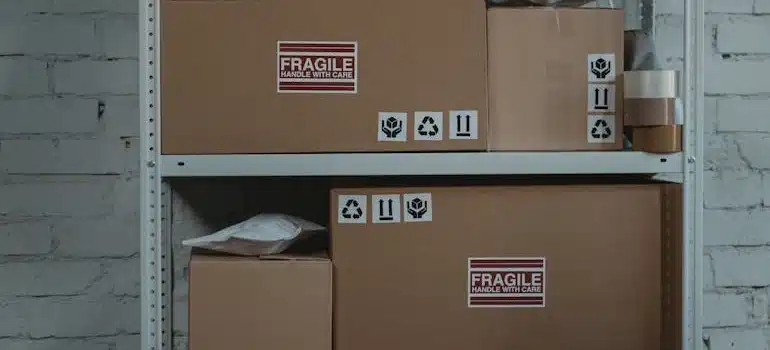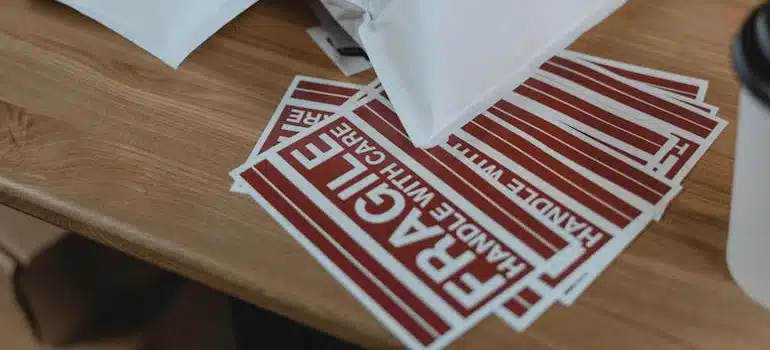Guide to packing expensive lamps and chandeliers for a long-distance move
Packing expensive lamps and chandeliers for a long-distance move requires care, time, and the right materials. Why? These pieces often include fragile glass, delicate shades, crystals, or antique wiring. Otherwise, improper packing can lead to cracks, chips, or total breakage. Therefore, this Pro Movers Miami guide explains exactly how to protect high-value lighting during relocation, step by step.
Take inventory and photograph each piece
Start with a full inventory. Write down every lamp and chandelier you plan to move. Include measurements, materials, and any visible issues. Take photos from all angles. This helps later with both setup and insurance.
Photographs document the item’s condition before packing. Keep these on your phone and in cloud storage. If damage occurs during the move, clear images can support your claims. Also, note how wires and fixtures connect so you can reassemble correctly.

Disassemble lamps and chandeliers whenever possible
Remove bulbs, shades, finials, and decorative parts. Most chandeliers allow you to detach crystals or arms. Wrap each item individually and store it in a labeled bag or pouch, or call your local white glove packing experts to do it for you.
Use sealable plastic bags for hardware like screws or chains. Label each bag clearly. Tape it to the base or box of the item it belongs to. Keep cords coiled and secured with twist ties. Never pack an assembled chandelier without checking if it can be safely taken apart first.
Wrap each piece using the right materials
Do not cut corners with wrapping. Use quality bubble wrap, packing paper, and foam sheeting. Start with a base layer of paper, followed by bubble wrap. Avoid direct bubble contact with delicate finishes. Never use a newspaper because ink can damage surfaces.
For shades, wrap in white paper or a cotton pillowcase. For crystal parts, use foam pouches or multiple bubble wrap layers. Secure everything with packing tape, but don’t tape directly to the item. Label wrapped pieces so you can match them easily during unpacking.
Choose the right type of box or crate
Use double-walled boxes for lamps. Select lamp boxes that match the height and width of the base. Never place heavy items in the same box. Add padding at the bottom and sides before placing the item inside.
For chandeliers, wooden crates offer the best protection with moving insurance as a backup. Crates can be custom-built with foam inserts to keep the fixture stable. If building your own, measure carefully and use plywood, not cardboard. For smaller chandeliers, heavy-duty boxes may suffice if reinforced and filled with cushion material.
Secure items inside the container
Once packed, make sure the item cannot shift. Fill gaps with crumpled paper, foam peanuts, or rolled towels. Shake the box gently as nothing should move. For lamps, keep them upright with padding on all sides. For chandeliers, install foam supports or use molded holders if available.
Mark every box as “Fragile” on all sides. Add “This Side Up” arrows to prevent improper handling. Use a waterproof marker in case the boxes get wet during transport. Include your name and phone number on each box.
Special tips for high-value antique lighting
Antique lamps and chandeliers need either the best protection you can provide or professional antique movers. Either way, antiques require wrapping in acid-free tissue before bubble wrap. This keeps finishes intact and prevents discoloration. Avoid plastic wrap, which can trap moisture and damage the surface over time.
Use humidity-control packets inside the box if the item is temperature-sensitive. If you’re shipping during hot or cold seasons, request climate-controlled transport. Also, verify whether your homeowner’s or moving insurance covers antiques. If not, consider specialty coverage.

Loading and transporting lamps and chandeliers with care
During loading, lamps should stay upright and go on top of heavier items. Never stack boxes above them. For chandeliers in crates, place them securely in the truck’s center area. Tie them down to prevent sliding.
Avoid placing lighting fixtures close to temperature-sensitive cargo like electronics or food. Secure each container so it won’t shift during long drives. If movers are handling the load, point out which boxes contain lighting and explain how they’re packed.
Consider hiring specialty movers
Professional Florida movers with experience in lighting transport can be a worthwhile investment. Chandeliers weighing over 50 pounds, or items wired directly into ceilings, may require dismantling by electricians. Some long-distance movers in Florida offer even chandelier packing and crating services.
Ask if the movers have handled similar items. Check their insurance policies. Also, ask about climate control, handling procedures, and delivery timeframes. Read reviews and confirm that they carry the correct permits for long-distance or interstate moving.
Unpacking and reassembling safely
Wait to unpack the lighting until the furniture is in place. Use a soft surface like a bed or padded table. Open boxes slowly and remove items in reverse order.
Compare each piece with your photo inventory. If anything is missing or damaged, note it immediately. File claims if you used insurance. Reassemble the fixture carefully, using your notes or photos to guide the process. For hardwired chandeliers, contact a licensed electrician to reinstall.
Avoid rushing because delicate parts often need precise placement. Double-check wiring, especially for older fixtures. If in doubt, consult a specialist before plugging anything in.
Additional tips to avoid damage when packing expensive lamps and chandeliers
Even when you use the right materials and follow the core steps, some overlooked details can still cause damage. To avoid common pitfalls, consider these expert tips when preparing your expensive lighting for a long-distance move:
- Use painter’s tape to reinforce glass surfaces – Apply a crisscross pattern to glass panels or mirrors to reduce shattering.
- Add silica gel packets inside sealed containers – This helps control moisture and prevents condensation from damaging finishes.
- Secure cords separately – Wrap cords with Velcro ties or zip ties and pack them away from delicate arms or bulbs.
- Avoid placing lamps near temperature-sensitive cargo – Exposure to electronics or perishable goods may cause warping or condensation.
- Never use plastic wrap directly on antique finishes – It can trap moisture and cause surface damage over long distances.
- Double box high-value lighting – Place the wrapped item in a snug box, then place that box in a larger box with padding in between.
- Label all boxes with destination room and item type – “Dining room chandelier” or “Living room lamp #1” improves organization on arrival.
- Photograph the packing process – This creates a time-stamped record in case of insurance disputes or shipping claims.
- Keep instruction manuals or wiring diagrams handy – These make reinstallation easier and reduce the risk of wiring mistakes.
- Check customs regulations for international moves – Antique lamps may include restricted materials or require declaration forms.
Considering these gives you more control, reduces the risk of loss, and makes unpacking easier when you reach your new home. For expensive lighting, every extra layer of protection counts!

Protecting your investment during the move
Packing expensive lighting for a long-haul relocation or storage calls for care and planning. Taking inventory, using the right materials, and disassembling when possible can reduce the risk of damage. Specialized containers like double-walled boxes and wooden crates add protection. Labeling, cushioning, and careful placement in the moving truck make a big difference.
However, if you’re unsure about packing expensive lamps and chandeliers for a long-distance move, hiring experienced high-end movers can prevent costly mistakes. Always keep photo documentation and insurance information on hand. With the right approach, you can move valuable lighting safely and without regret.
